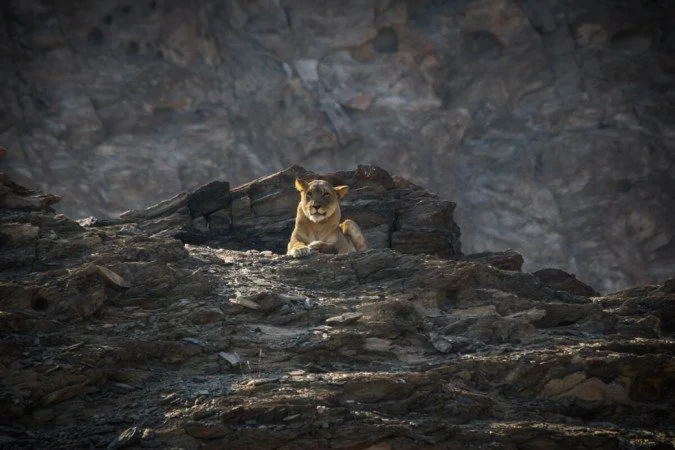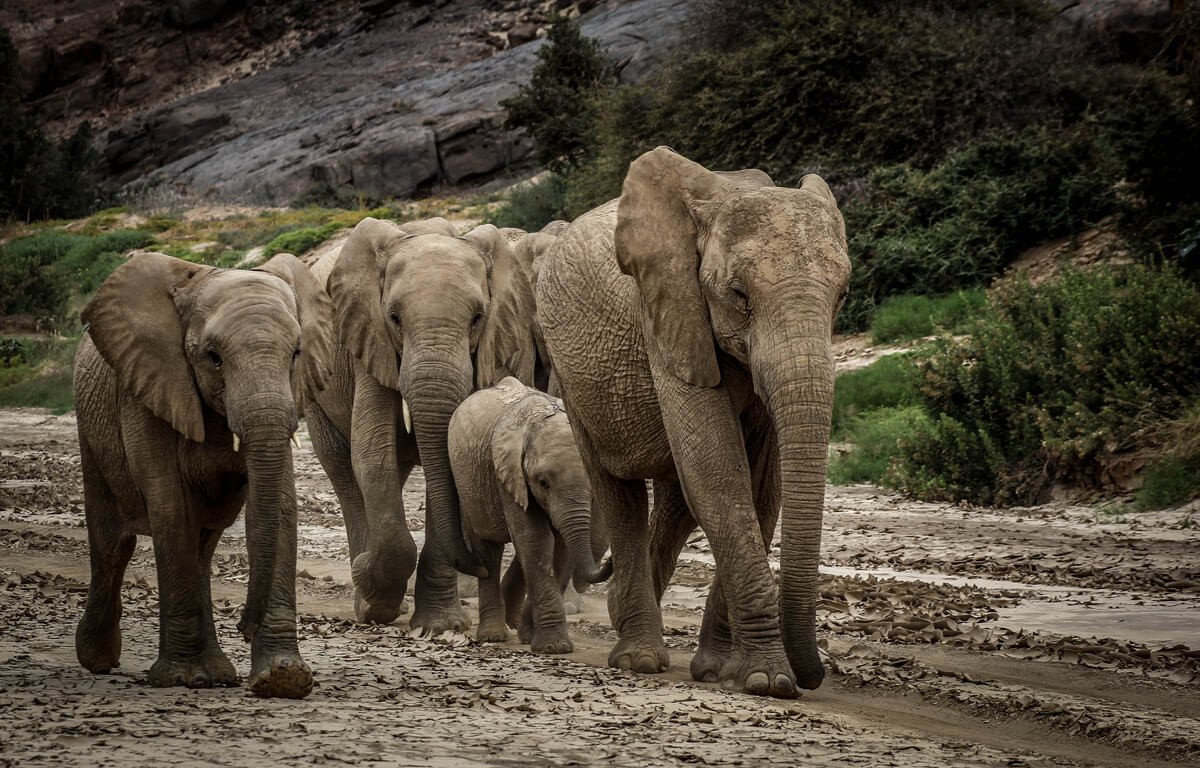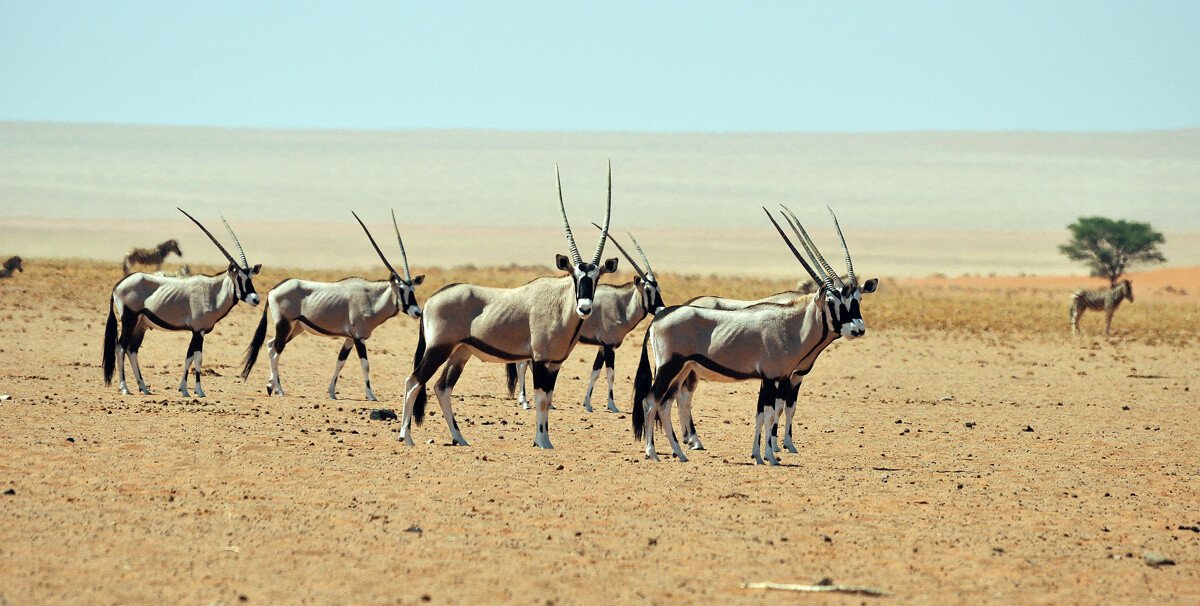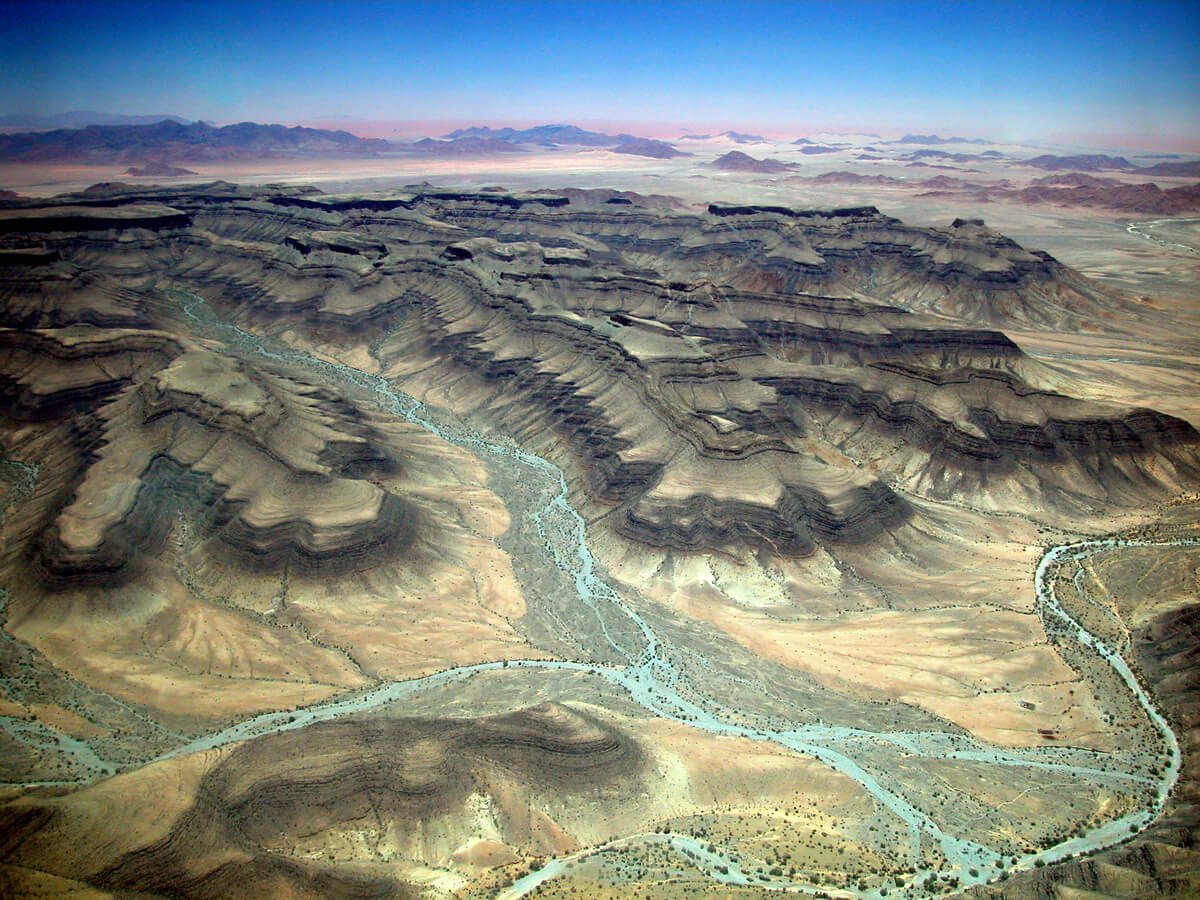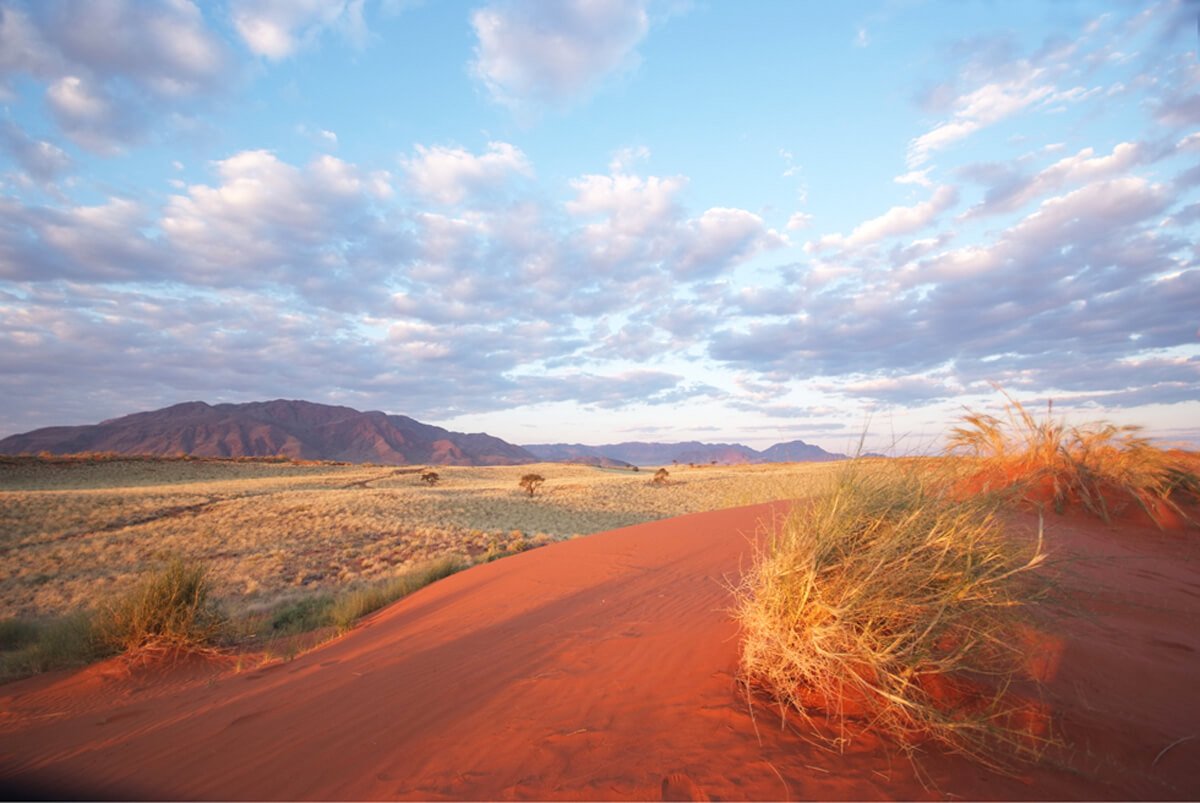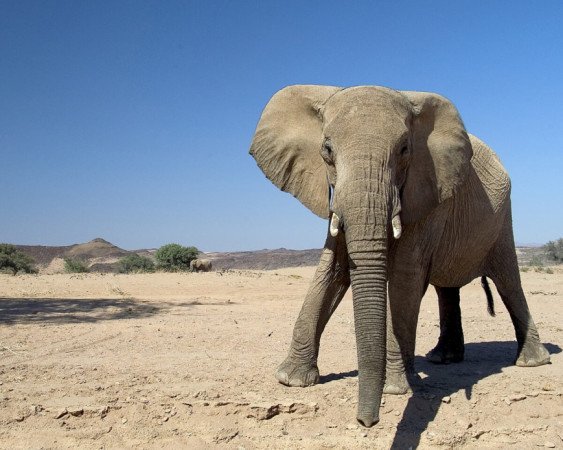
PROTECTING THE LIVING LANDSCAPE IN THE DORO INAWAS SORRIS SORRIS & UIBASEN CONSERVANCIES
Protecting the Living Landscape in the Doro Nawas, Sorris Sorris & Uibasen Conservancies
Location: Kunene Region, North West Namibia
Grantee: Conservation Travel Foundation
Nominated by: Todos Santos Eco Adventures
Year: 2023
Grant: $15,000
Goal
To use tourism as the catalyst to conserve a large and unique landscape in Northwest Namibia, and to protect the fauna and flora there for the benefit of local communities.
Project Summary
This area of 19,000 hectares in northwest Namibia has been at the center of a dispute that has lasted almost 20 years. Ownership of this land has been contested throughout this time between three communal conservancies, namely Uibasen, Sorris Sorris, and Doro Nawas Conservancies. Ultimate Safaris, with the support of their own non-profit organization, the Conservation Travel Foundation, and NGOs such as the Namibia Nature Foundation and Save The Rhino Trust, has served as the catalyst and motivator behind getting the three conservancies to agree to terms for a Joint Management of the Area. This has meant motivating an agreement to own, manage, and benefit from this area on a joint basis. A leasehold registration is in process and, once approved, this will make this area, now called the Doro Joint Management Area, the single largest registered communal land leasehold in Namibia.
This is an incredible success story and we believe it will be a blueprint for other areas such as this in time to come. The work has now begun on investment into the necessary infrastructure for this area, including roads, wildlife watering points, control of access, conservation personnel, and much more. This will enable private sector investment into revenue-generating conservation and adventure travel activities to the benefit of these joint community land custodians.
The funds allocated would be utilized to provide some of the vital infrastructure such as road works, signage, and security systems. Ultimate Safaris has already opened a tented camp in the area as a first step towards generating the steady income required, and there are plans to add a luxury lodge once the necessary negotiations for that have been successfully concluded.
How will this project support the community, culture, and landscape?
The project aims to conserve what will be the largest conservancy leasehold in Namibia. This will create a haven for wildlife, and it will also produce a steady stream of revenue that can be used to manage and preserve the greater landscape. The project will also create employment at a local level in addition to a new revenue stream that can be used for general development projects.
The largest risk that this project could face would be the national or global collapse of tourism caused by a global event, similar to the pandemic of 2020. However, it is assessed that there are no specific environmental risks that would evolve from this project.
What are the impacts you hope to see as a result of this project?
Operating procedures including rules and regulations outlined and approved by conservancies
Signage erected at all entrance points displaying relevant rules and maps
Road network mapped out, and directional signs implemented to minimize off-road driving
Train and empower community rangers to question and control travelers moving through the area
Reach out to and engage tourism stakeholders to ensure buy-in from the greater tourism sector
Strategize and develop a management plan, including boom gates and security systems, with AI to assist with monitoring
Renovation and improvement of old waterholes to assist with wildlife movement
How will this project combat climate change?
This project will be the largest land preservation project on communal leasehold in Namibia, creating a haven for wildlife and preserving the landscape that they traverse. It will also be fully sustainable as any expenses will covered by the anticipated revenue from traversing fees etc.
What does final success look like?
Established community conservation through the creation of management systems and a new revenue stream that can be used to protect and conserve a 19,000-hectare area, providing a safe haven for wildlife that is ensured by good monitoring and private sector buy-in.
Get to know the Doro Nawas community
What makes this community unique?
The communities involved live alongside free-ranging black rhinos and they have long realized the importance of wildlife and its protection in terms of being able to attract visitors, and their money, to areas that have few other sources of regular revenue. They are aware of the challenges involved in having potentially dangerous wildlife near their homes, but they have realized that these challenges are far outweighed by the positive impact their presence can bring. This community project is unique because it is the first time in Namibian history that three conservancies have joined forces to register a large tract of land for conservation, showcasing the forward-thinking of all three communities and their leadership.
Conservation challenges
Control of visitors is a major challenge in a vast area of 19,000 hectares which is mainly an open landscape with no fences. If proper management is not achieved, the landscape could be significantly degraded and wildlife greatly disturbed by human presence as well as both noise and physical pollution. As this is a core wildlife area, it is vital for the community to ensure its protection as they are reliant on the tourism revenue that is generated from the use of resources in the area.
Does Doro Nawas rely on a protected area to attract visitors?
The introduction and development of Communal Conservancies in Namibia is one of the most successful recent conservation ideas, and this has become an integral part of the Namibian tourism industry. The financial and technical support provided to local communities by tourism ventures in their area helps them to develop strategies to enhance the protection of the local landscape and its inhabitants. It remains crucial that the local community benefit from tourism activities in their local area because they are the land custodians, and they will help to protect both the environment and its inhabitants if they see the value these can bring. This is why the protection and survival of the iconic species that bring visitors to the area is so essential. A positive and sensitive tourism presence gives a benefit to land and wildlife, and it uplifts the community thus leading to alleviation of rural poverty.
How will this project support the communities impacted by tourism?
This project will create an additional revenue stream for a sensitive area that was previously used for uncontrolled tourism that did not produce any significant local benefit by the introduction of correct management systems and oversight which will assist with covering the costs that are incurred in managing an area of this magnitude.
This project will be the largest land preservation project on communal leasehold in Namibia, creating a haven for wildlife and preserving the landscape that they traverse. It will also be fully sustainable as any expenses will covered by the anticipated revenue from traversing fees etc.
Q1 2024 Progress Report Summary
Donate Today!
This project has already been awarded $15,000 by global businesses in the travel and outdoor industries! Help them achieve even more impact and make a donation today!
More about Conservation Travel Foundation
The Conservation Travel Foundation is a travel funded Namibian non-profit organization dedicated to the protection and conservation of the areas in which they operate as these are some of the most pristine and delicate wilderness areas on earth.
Founded in 2006 by Tristan Cowley, later also a co-founder of Ultimate Safaris, the objective of the Foundation was to partner with Conservation Travel to bring about tangible, positive impacts on ecosystem conservation and on the socio-economic development of rural communities in Namibia.
The early efforts of the Foundation raised a mere few hundred dollars a year. It now raises, and deploys, in excess of US$ 250,000 a year for conservation and rural development projects in Namibia.


